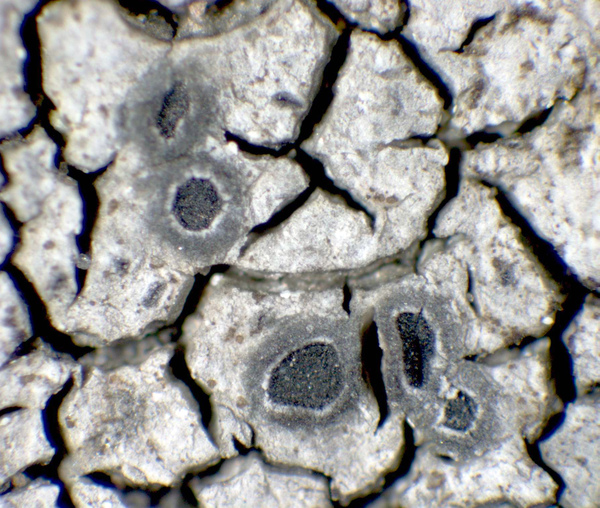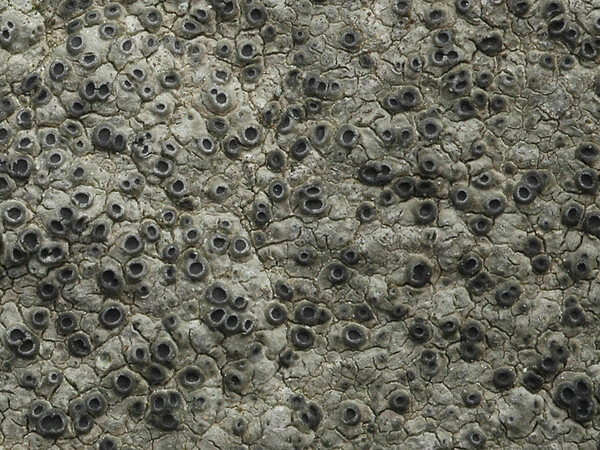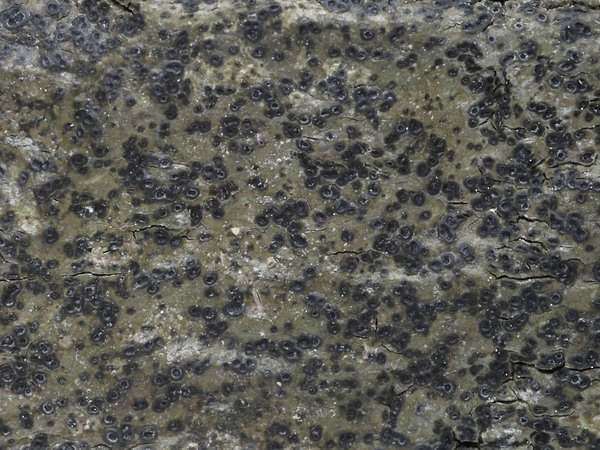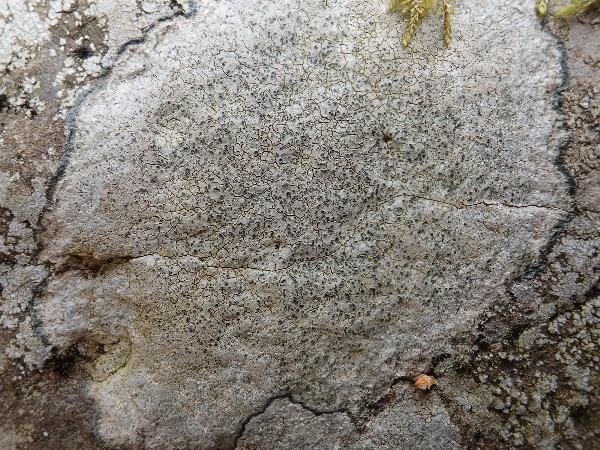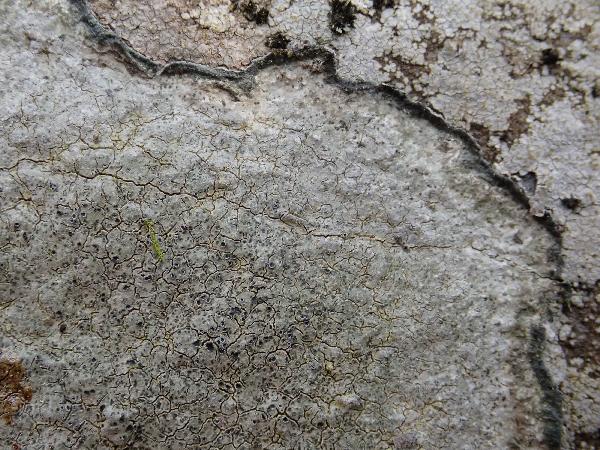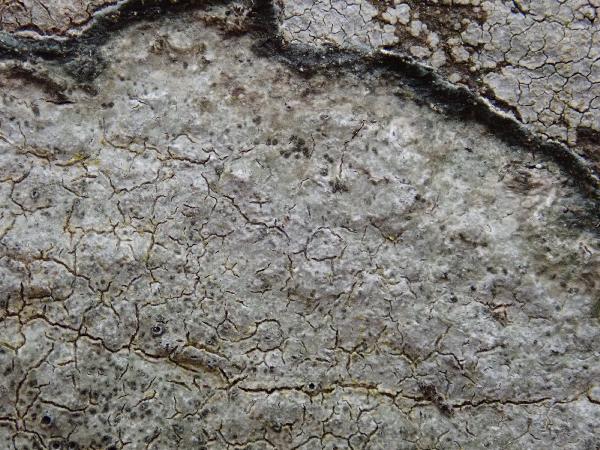Aspicilia laevata (Ach.) Arnold
Verh. zool.-bot. Ges. Wien, 37: 98, 1887. Basionym: Sagedia laevata Ach. - K. Vetensk.-Akad. Nya Handl., 30: 164, 1809.
Synonyms: Aspicilia cinerea var. laevata (Ach.) Körb.; Aspicilia gibbosa var. laevata (Ach.) Stein; Aspicilia lusca (Nyl.) B. de Lesd.; Aspicilia sylvatica Arnold; Aspicilia vitrea Anzi; Lecanora distinguenda Zahlbr.; Lecanora laevata (Ach.) Nyl.; Lecanora lusca Nyl.; Lecanora sylvatica (Arnold) Sandst.
Distribution: N - Frl (Tretiach & Hafellner 2000), TAA (Nascimbene & al. 2022), Lomb (Isocrono & al. 2004), Piem, Emil (Fariselli & al. 2020). C - Tosc (Tretiach 2015c), Sar (Rizzi & al. 2011, Giordani & al. 2013). S - Camp (Nimis & Tretiach 2004), Cal (Puntillo 1996).
Description: Thallus crustose, episubstratic, rather thin, more or less smooth, continuous to slightly rimose, rarely distinctly areolate, pale to dark green-grey, becoming bright green when wet, with a black hypothallus and a delimiting black prothallus. Apothecia lecanorine-aspicilioid, immersed and usually crowded, 2-5 per areole, round but often distorted, crater-like, 0.3-0.5(-0.8) mm across, with a dark brown to black, epruinose, concave to finally flat disc, and a thick, prominent thalline margin. Epithecium green to olive, N+ emerald green; hymenium colourless, 90-120(-150) µm high, I+ blue turning red-brown; paraphyses weakly branched, submoniliform, 1.5-2(-2.5) µm thick at base, the upper cells to 3 µm wide; hypothecium more or less colourless, I+ blue. Asci 8-spored, cylindrical-clavate, the thin outer coat K/I+ blue, the wall and apical dome K/I-. Ascospores broadly ellipsoid, 13-18(-23) x (8-)9-13 µm, thin-walled. Pycnidia with a black to brown, punctiform ostiole. Conidia filiform, straight, (14-)18-25 x 0.8-1 µm. Photobiont chlorococcoid. Spot tests: medulla K+ yellow or K+ yellow turning reddish brown, C-, KC-, P+ orange. Chemistry: medulla with stictic acid (major), norstictic acid (minor or absent), sometimes with an unidentified terpenoid.Note: a mainly boreal-montane, circumpolar species found on periodically submerged rocks, sometimes also in humid forests. Most frequent in the Alps, but extending southwards along the Apennines to Calabria.
Growth form: Crustose
Substrata: rocks
Photobiont: green algae other than Trentepohlia
Reproductive strategy: mainly sexual
Periodically submerged (e.g. in creeks)
Commonnes-rarity: (info)
Alpine belt: very rare
Subalpine belt: rather rare
Oromediterranean belt: rare
Montane belt: rare
Submediterranean belt: very rare
Padanian area: absent
Humid submediterranean belt: rare
Humid mediterranean belt: extremely rare
Dry mediterranean belt: absent

Predictive model
Herbarium samples
Growth form: Crustose
Substrata: rocks
Photobiont: green algae other than Trentepohlia
Reproductive strategy: mainly sexual
Periodically submerged (e.g. in creeks)
Commonnes-rarity: (info)
Alpine belt: very rare
Subalpine belt: rather rare
Oromediterranean belt: rare
Montane belt: rare
Submediterranean belt: very rare
Padanian area: absent
Humid submediterranean belt: rare
Humid mediterranean belt: extremely rare
Dry mediterranean belt: absent

Predictive model
| Herbarium samples |
 INDEX FUNGORUM
INDEX FUNGORUM
 GBIF
GBIF
 DOLICHENS
DOLICHENS
